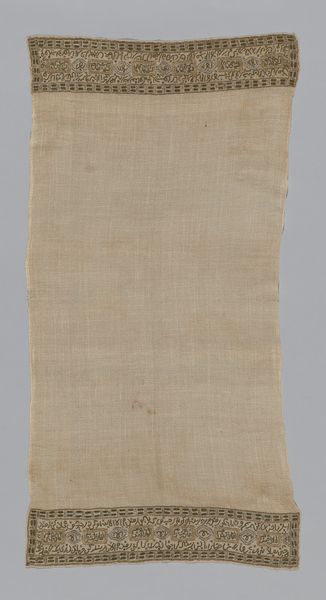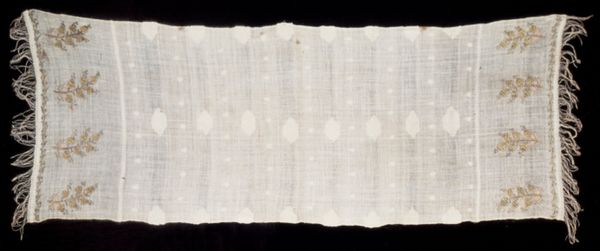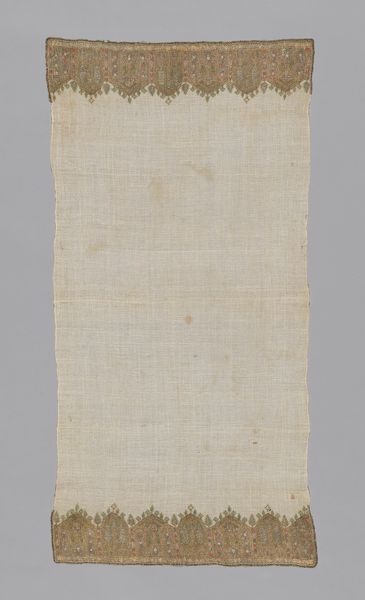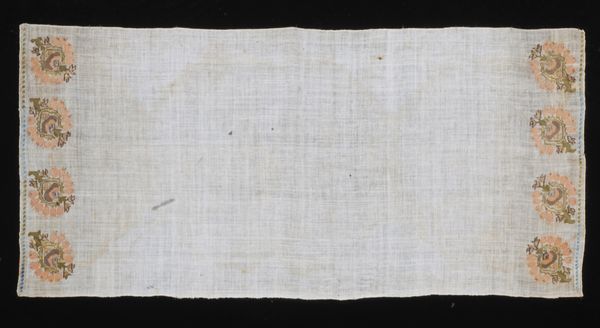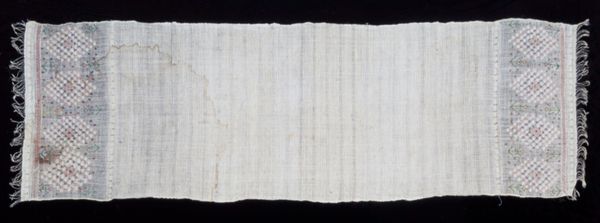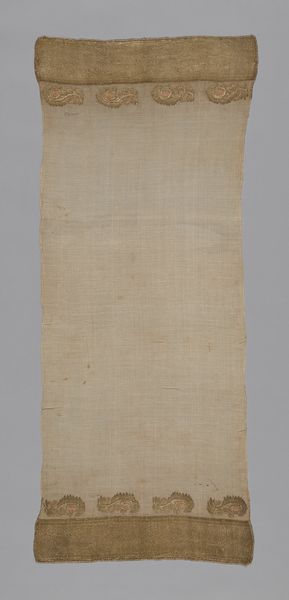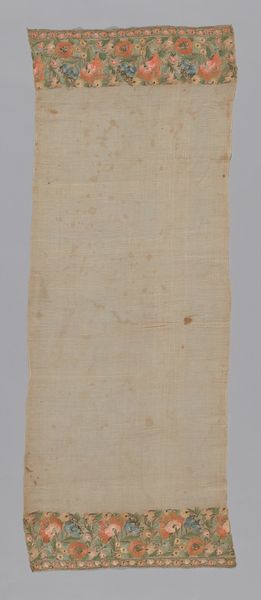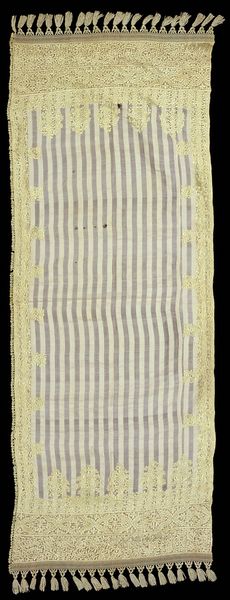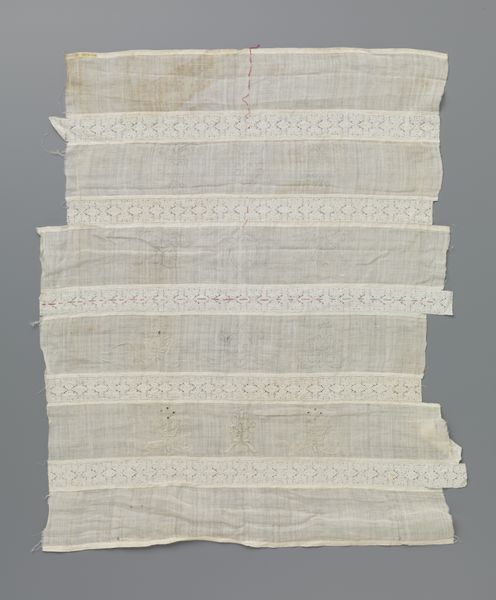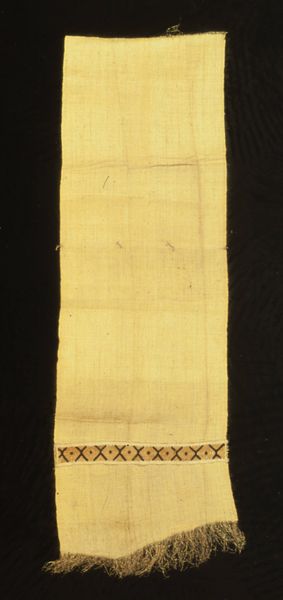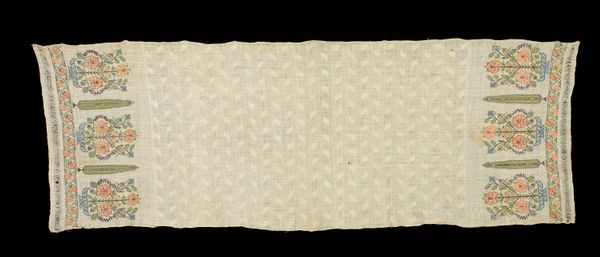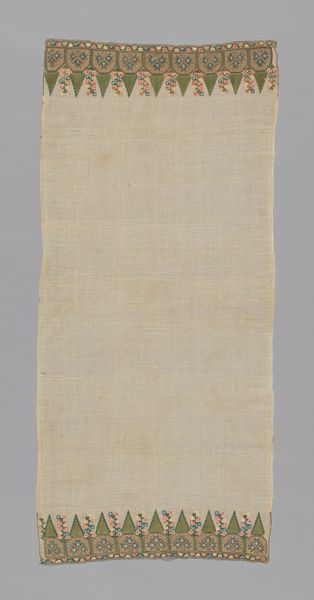
fibre-art, textile
#
pattern heavy
#
natural stone pattern
#
fibre-art
#
textile
#
geometric pattern
#
abstract pattern
#
organic pattern
#
repetition of pattern
#
pattern repetition
#
textile design
#
layered pattern
#
combined pattern
Dimensions: 64-1/2 x 15-3/16 in. (163.8 x 38.6 cm)
Copyright: Public Domain
Curator: This textile artwork, called "Sash," dates back to the early 20th century. It’s currently housed here at the Minneapolis Institute of Art. Editor: My first impression is of something remarkably delicate. It has a sort of muted elegance despite the bright embroidery. There’s a rhythmic simplicity in the repeated patterns. Curator: Pattern is central here. You see the bold, ornate designs at either end contrasted with those understated horizontal bands running through the piece's core. We can examine it through the lens of the Pattern and Decoration movement, situating it in discussions about labor, gender, and craft versus fine art. How might its creation speak to the socio-political status of the maker? Editor: Exactly. Think about the unseen labor embedded within this fibre art. Who spun the thread? Who wove the base? The repetitive, painstaking work of applying those embroidered flourishes. The very means of its making challenges our assumptions of artistry and consumption. I wonder about its function; how it would have been used and valued, both practically and culturally. Curator: It pushes against a Western art hierarchy. Often these traditional textiles, especially when made by women or marginalized communities, are relegated to “craft”, which ignores the knowledge embedded within the materials, dyes, and techniques used. It's crucial to look beyond aesthetics. For example, what significance might the chosen motifs hold? Editor: Absolutely, the combination of delicate fibers and robust geometric patterns is compelling. Looking at the organic quality of the abstract designs combined with repetition, there's also a striking balance. It speaks to the raw material versus the intentional intervention of labor. Curator: And if we broaden that intersectional reading, what does it tell us about the wearer of this "Sash?" Its role within performances of identity and social narratives is crucial to unpacking meaning and significance. Editor: For me, it evokes both ritualistic intention and quiet, daily practice, reminding us that art and production can co-exist meaningfully, each informing the other's value. Curator: Thinking about its layered meanings brings this piece to life, doesn't it? Editor: It truly does, prompting a renewed appreciation for process and embedded human effort.
Comments
No comments
Be the first to comment and join the conversation on the ultimate creative platform.
